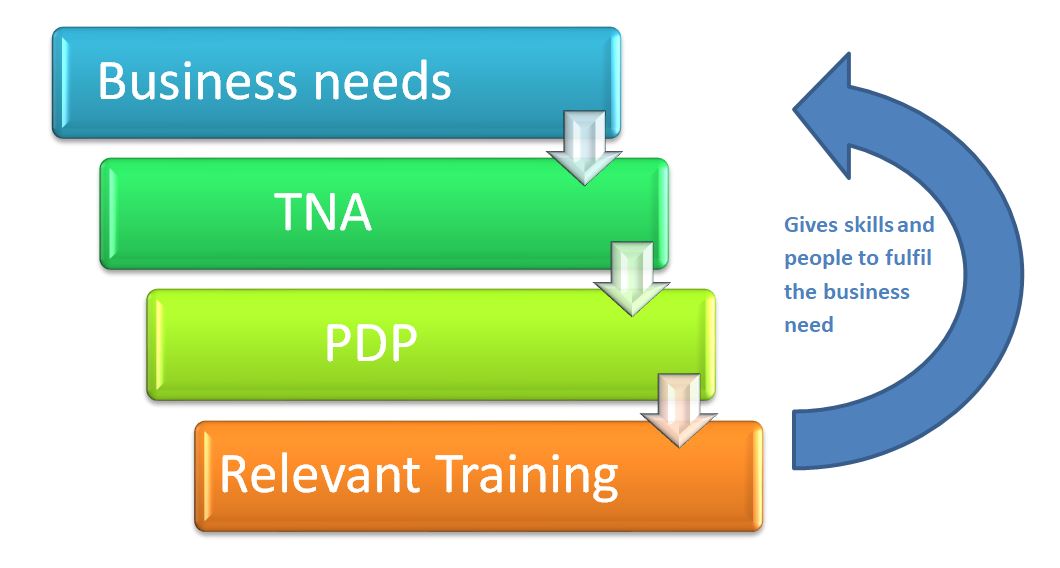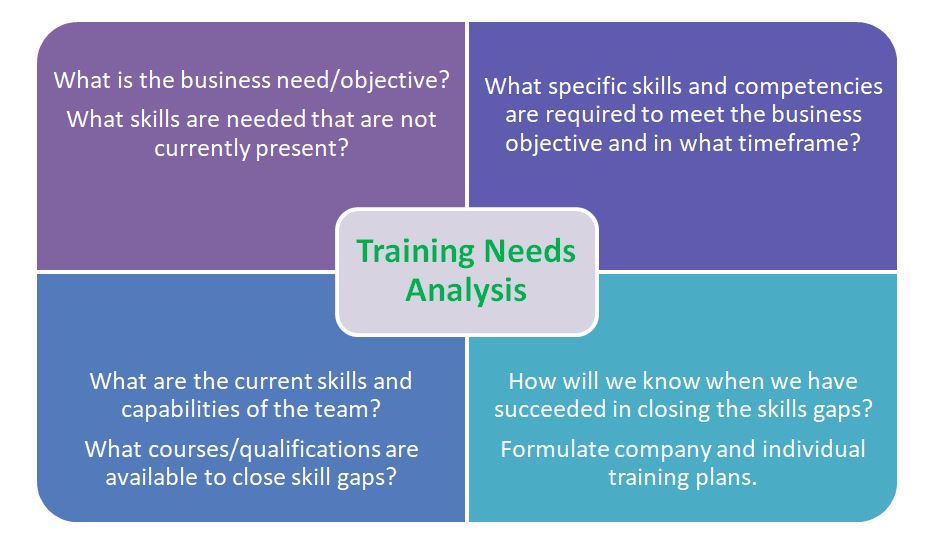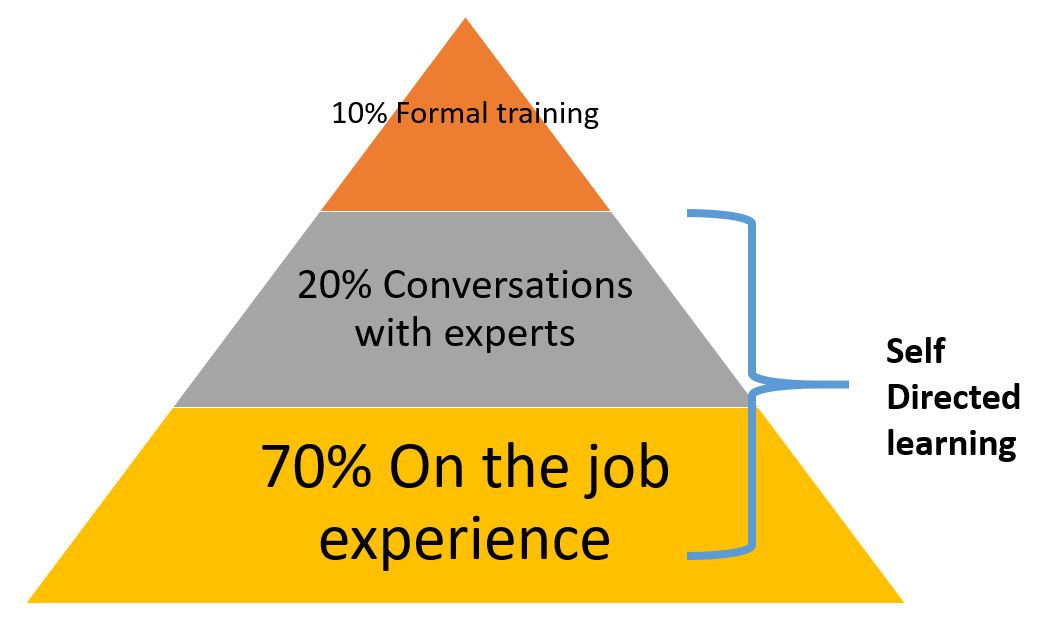Business Bites: Business planning and developing your team

Process flow where business needs can be established through a skills gap analysis (TNA = training needs analysis; PDP = personal development plan)
In an ever-changing world that we find ourselves, the workplace is more dynamic and agile than ever before. Today we can’t really know what roles will exist in 10 years’ time and what skills may be needed to fulfil those new roles.
To be able to manage this flux and to keep our teams, you need to be in a continuum of carrying out assessments of the workplace needs, personal needs, and personal skills to match them and put actions in place where needed. So, what will a better skilled workforce deliver?
Firstly, we should recognise that individuals will feel valued when they are allowed to develop leading to better morale in the team.
So, what will a better skilled workforce deliver?
Firstly, we should recognise that individuals will feel valued when they are allowed to develop leading to better morale in the team.
From a business perspective:
- Skilled workforce: improved reputation; brand loyalty; gain market share
- No development: complaints; lack of trust; loss of business
Well trained and engaged teams can bring value to organisations, customers, and business. This can help provide much needed competitive advantage. Team members are more confident and competent in tasks that they are undertaking if they are receiving focused and high quality development. This will help add value for you, your business, the individual and also your customers.
Skills gap analysis
To start the process, you need to look at the needs of the business both now and the desired goals in the future and compare these to the existing workforce.
• For example, for a current role who do you have and what training may they need?
• For a new/future role, what are the requirements, what training may be needed and who should be trained?
• For roles that are no longer needed in the business, what re-skilling may be needed for individuals?
This strategic workforce planning will help you to get an overview of the whole organisation as well as the individuals in it. It will inform both your training and development strategy and your recruitment strategy. As much as possible, it should have the aim of future proofing the business as well as improving productivity by providing development for the existing team members.
Useful questions to use in the analysis may include:
• What is the business direction/plan?
• What may you have to deal with in the next 12 months?
• Given the current workforce, how can you develop the necessary strategies to get you where we want to go?
• What skills sets do you require from your employees?
• What skill sets will these employees need to possess in the future?
• What areas of the business are you lacking knowledge or resources in?
• What jobs need to be filled in order to allow the business to get to where it needs to go?
• Which jobs have the potential to become automated now or in the future?
• What skills needs are on the rise?
• Which new future positions will your company need?
 Training needs analysis
Training needs analysis
A training needs analysis (TNA) is something you need to do before creating any training programs within your organisation. Ideally the training goal should correspond to a business objective and make sure that your desired outcomes match up with those of the business as a whole.
Involve your team in the process by explaining what you are trying to achieve for the business and ask them what they think may be required. This could be done in a group environment, through one-to-ones, and through assessment and evaluation. It’s important to communicate why you are developing people and get engagement.
Remember that a skills gap is simply the difference between the way employees are currently performing and the way they need to perform in order to achieve future business goals.
Once you’ve collected all competency evaluation data, it should become clear whether there are gaps in key competencies. Create a list of gaps and prioritise them in order of importance. This should consider the percentage of your team that needs the training and who should attend training as a priority.
During this stage, try to find a balance between the most appropriate and the most cost-effective training method. This could be in-house training, external training, external training leading to a required qualification.
A useful model to consider when planning training is the 70-20-10 model. The model is a useful tool for facilitating, as well as measuring and recognising the value of experiential learning. It can be used as a tool for personal and employee development by identifying gaps in skills/knowledge.
 The model is also helpful as a means of shaping an organisation’s learning and development environment in terms of planning, allocation of resources and ensuring an integrated, mixed approach. In addition, it can also be used in observing how people learn most effectively, matching learning opportunities with an individual’s preferred learning style.
The model is also helpful as a means of shaping an organisation’s learning and development environment in terms of planning, allocation of resources and ensuring an integrated, mixed approach. In addition, it can also be used in observing how people learn most effectively, matching learning opportunities with an individual’s preferred learning style.
Skills and knowledge are acquired in three different ways, broken down as follows:
• 10 per cent through formal training such as workshops, qualifications, face-to-face training
• 20 per cent through conversations with field experts, managers, coaches etc
• 70 per cent through on-the-job practical experience, social media, e-learning etc
The self-directed element which accounts for 90 per cent of an individual’s learning is typically unplanned. Measuring and recognising the value of self-directed learning that takes place in the organisation is critical for understanding how an individual learns, and also for identifying ‘gaps’ in their knowledge or skills.
Personal development plans
So what is a personal development plan (PDP) and why should everyone have one? Accoprding to the Open University: “PDP supports the idea that learning is a lifelong and life-wide activity. The process of writing a PDP can strengthen the capacity of learners to reflect upon their own learning and achievement and to plan for their own personal, educational and career development. This is a core learning process, required throughout many employment and continuing professional development contexts”.
Once the training needs in the business have been established, and possible training methods and interactions are in mind, it is important that every individual has a PDP.
For an individual, building and discussing a personal development plan will help:
• Become aware of skills they have.
• Identify and develop skills they need.
• Work out what they want to achieve and how to achieve it.
• Focus on potential study, career, and personal development goals.
The PDP for an individual is something that they should own, and it is a living document that should be regularly reviewed and updated. It should be reviewed at appraisals/reviews to decide if any adjustments are required, and if any additions to the plan are needed. It should also be used to recognise and celebrate success.
There are various templates for a PDP and one example can be seen here.
As mentioned earlier, the process described in this article should be continuous as you review the business needs regularly.